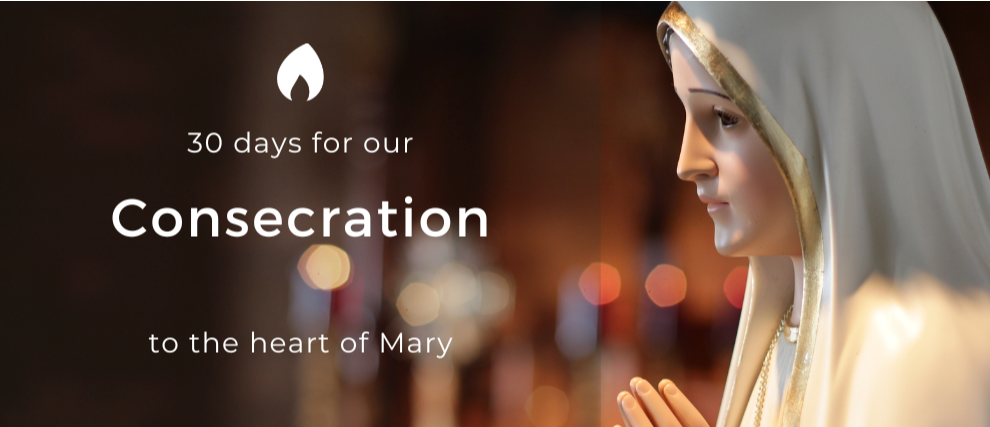Saint Teresa of Avila
Teresa de Ahumada was born on 28 March 1515 in Gotarrendura, Castile. She grew up in a noble family of converted Jews. She developed her intelligent and passionate personality there. From her social background, she drew her open-mindedness, her relationships, her education, and her taste for reading. Later, she said that her childhood readings revealed the truth to her: Everything passes, God alone remains. At seven, she dreamed of imitating the martyrs and left with one of her brothers, hoping to die for her faith at the hands of the Moors and “see God in Heaven”. Teresa became a charming young girl who liked to please her father after the death of her mother, who sent her to board with the Augustinians of Notre-Dame-de-Grâce. There, she reflected on religious life.
At the age of 20, she entered the convent of the Incarnation of Avila under the name Teresa of Jesus. The adaptation to the Carmelite life was happy and harsh at the same time. Teresa’s health suffered gravely, and she had to return to her family several times to rest. She spent the first twenty years of religious life without any exceptional events, making continuous efforts to sincerely give her life to God. She learned prayer but remained tested by an inner division between the desire to give herself to Jesus and his lukewarmness.
Reading the Confessions of Saint Augustine, she meditated on the humanity of Jesus. At the age of forty, she experienced what she called her second conversion. Teresa surrendered to Jesus, this time not out of effort, but out of love. It was then that she had mystical experiences; she met Jesus crucified, who became her master and her friend. On one ecstatic occasion, she experienced transverberation, that is to say that her heart was pierced by a lance radiating the love of Christ. These exceptional experiences elicited the mistrust of the other sisters and forced Theresa to prove herself, an effort in which she was helped by the Franciscan Peter of Alcantara.
In 1562, Teresa founded the small convent of Saint Joseph in Avila, with the desire to return to the simple life of Carmel. This was the beginning of the Discalced Carmelites. On the orders of her spiritual advisers, Teresa wrote the story of her life. This autobiography was completed in 1564 and is entitled The Book of Life. Teresa sincerely sought to lead her life as a Carmelite and wished to share her experience with others. She left Avila, on the roads of Castile and Andalusia and visited 17 monasteries. She generated the same momentum among the Carmelites, one of the first of whom was Saint John of the Cross. Both inhabited by the love of Christ, they united to inflame Spain and the world.
In 1571, Teresa returned to the monastery of Avila, where she was appointed prioress. Saint John of the Cross was chaplain. Together, they shared their spiritual experiences and Teresa wrote The Foundations. Beginning in 1577, she wrote her great book, The Interior Castle. At the end of her life Teresa returned to visit the sisters of the convents she had founded, wrote letters, gave her final advice, and finally, exhausted and sick, died on October 4th, 1582 in Alba de Tormes.
Teresa of Avila entered the family of saints in 1622, canonized by Pope Gregory XV and proclaimed the first woman doctor of the Church in 1970 by Paul VI. She is celebrated on October 15.
Saint Teresa of Avila
The great work of Saint Teresa of Avila is the reform of Carmel, with the foundation of a new branch: the Discalced Carmelites. As she matured spiritually, Teresa developed an ideal of reforming Carmel. She wished to return to the original rule of Carmel and to encourage isolation, following the example of the prophet Elijah. In 1562, with the support of the bishop of the city, Don Alvaro de Mendoza, Teresa founded the first reformed Carmel. It was approved by the Order's superior general, Giovanni Battista Rossi. She continued to found new Carmels, seventeen in total. The encounter with Saint John of the Cross was fundamental; with him, she founded the first monastery of unsealed Carmelites in Duruelo in 1568, characterized by the absence of shoes. In 1580, Rome decreed that her reformed Carmels would be erected as autonomous Provinces. This was the starting point of the religious order of the Discalced Carmelites.
The writings of Saint Teresa of Avila
The writings of Saint Teresa of Avila are masterpieces of literature and spirituality. While she had no university education, she was able to take advantage of the great theologians and fathers of the Church: Saint Jerome, Saint Gregory the Great, and Saint Augustine.
Her major works are:
· The Book of Life written by Teresa in 1564 in obedience to her spiritual fathers. It is more than an autobiography; Teresa calls it the Book of the Lord's Mercies.
In 1566, she wrote The Way of Perfection for the twelve novices of St. Joseph's Carmel, which she called admonitions and advice given by Teresa of Jesus to her nuns. It defines the way of praying and living for Carmelites, based on the evangelical virtues of prayer.
· Saint Teresa's most famous mystical work is the Interior Castle, written in 1577. Teresa retreads her spiritual life path and, in parallel, describes a path to live Christian life to its fullest. Elle compares the interior of man to a castle with seven dwellings, under the action of the Holy Spirit, man progresses in this castle to holiness.
· The Book of Foundations, written between 1573 and 1582, is devoted to the life of the nascent religious group. Teresa underlines the actions of God in the founding work of the new monasteries.
· Saint Teresa of Avila also wrote several poems, including the most famous extract found in her breviary: "Let nothing trouble you, let nothing frighten you, everything passes, God does not change, patience triumphs over everything, he who possesses God lacks nothing, God alone is enough! (Poetry 9).
The writings of Saint Teresa of Avila
The spirituality of Saint Teresa of Avila is rich and profound. It deserves to be read in detail, but we can draw out the main ideas.
· Teresa places the virtue of the gospels as the basis of all Christian and human life. In particular, poverty and detachment are essential virtues. Love, humility and hope are just as many qualities that bring the soul to God.
· Therese insists on listening to the Word of God and harmony with the great biblical characters.
· Prayer is essential, it evolves as the soul progresses and becomes the fruit of union with God.
· Therese emphasizes the importance of the personal relationship with Jesus, which is based on the discovery of the humanity of Christ. It is therefore important to meditate on the episodes of Jesus' life, especially the Passion.
Prayers to Saint Teresa of Avila
Novena to Saint Teresa of Avila
The novena to Saint Teresa of Avila can be prayed during the nine days preceding her feast, on October 15.
Prayer: “In the silence of this nascent day”
“ Lord, in the silence of this nascent day, I come to ask you for peace, wisdom and strength.
I want to look at the world today with eyes full of love, to be patient, understanding and gentle, to see beyond appearances, your children as you see them yourself, and thus see only good in each one of them.
Close my ears to all slander, keep my tongue from all malice, that only words that bless remain in my mind. May I be so benevolent and joyful that all who come to me feel your presence.
O Lord, clothe me with your beauty, and throughout this day I will reveal you. Amen.”

